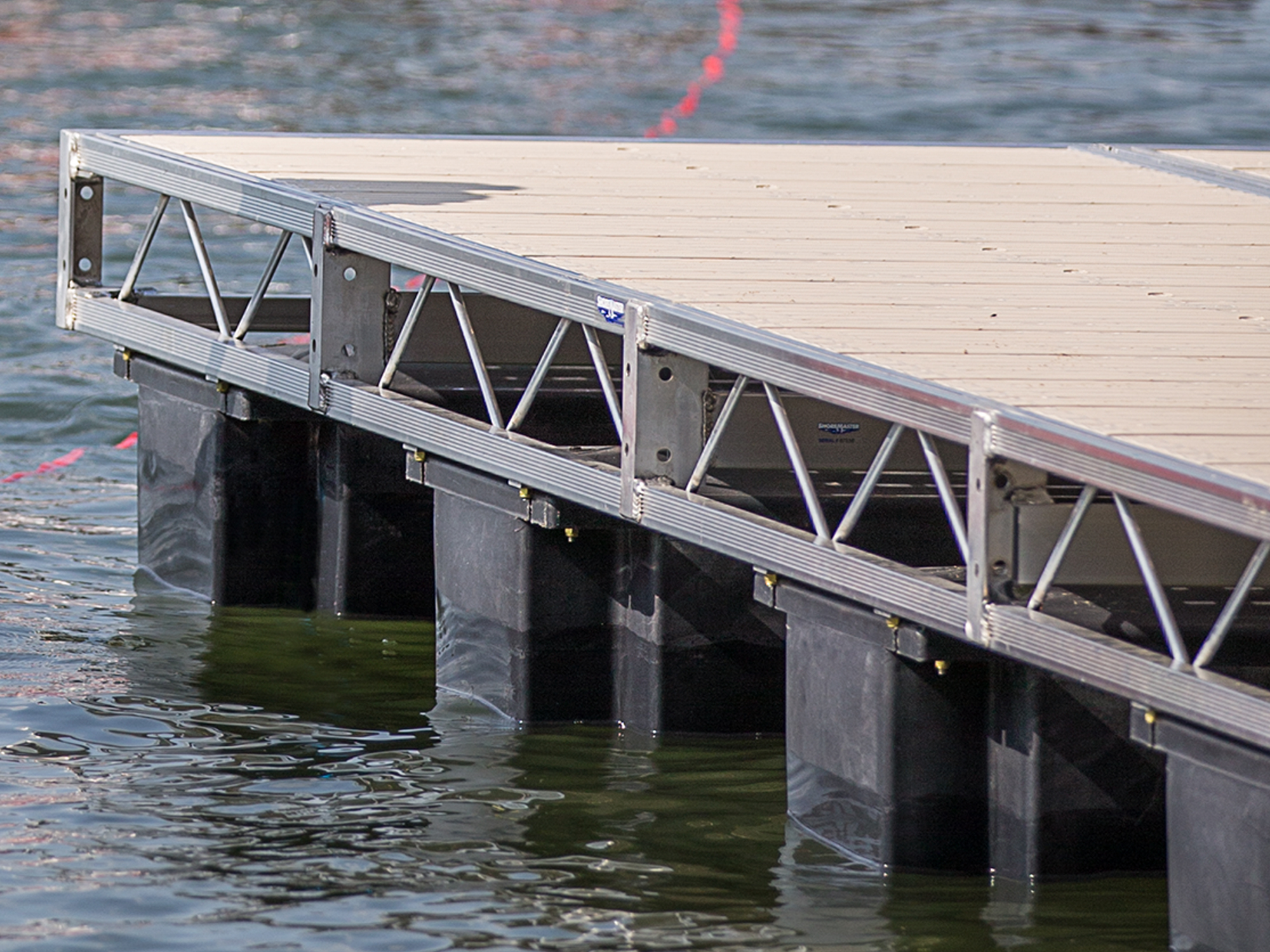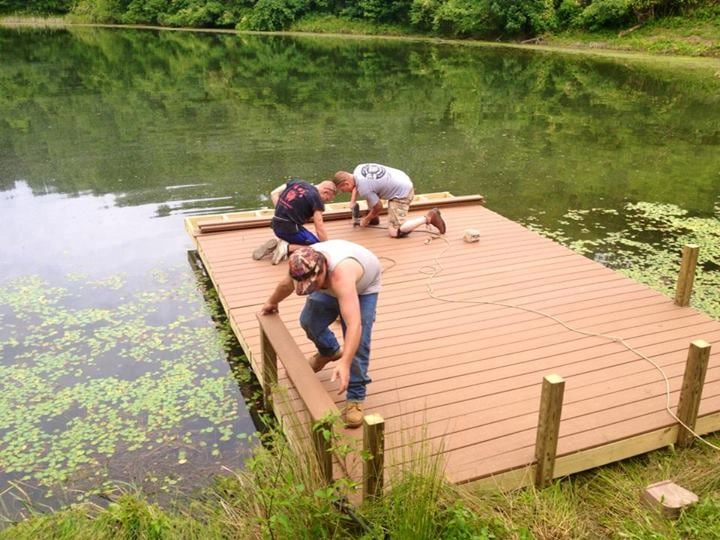Discover the Series Of Floating Dock Providers Designed to Suit Every Seafarer's Demands
Discover the Series Of Floating Dock Providers Designed to Suit Every Seafarer's Demands
Blog Article
Develop the Perfect Docking Solution With Floating Docks
Floating docks present a functional solution for a range of maritime requirements, adjusting effortlessly to changing water levels and diverse vessel kinds. As we check out the essential elements that add to the efficiency of floating docks, several crucial aspects relating to security and maintenance will certainly arise, raising questions about just how to maximize your docking experience.

Benefits of Floating Docks
Floating docks deal countless benefits that make them an optimal option for numerous maritime applications. One of the key benefits is their flexibility to altering water degrees. Unlike dealt with docks, floating docks fluctuate with the tide, making certain regular ease of access for vessels. This feature is especially vital in areas susceptible to substantial tidal changes or seasonal water degree adjustments.
Furthermore, floating docks are commonly simpler and quicker to install compared to traditional fixed frameworks. Their modular layout permits straightforward assembly and disassembly, promoting maintenance and moving when necessary. This versatility is particularly advantageous for temporary applications or in settings where problems may alter.
Floating docks also often tend to be more ecologically pleasant, as they lessen disruption to the seabed and bordering aquatic ecosystems. Their buoyant nature reduces the threat of damage to aquatic life, promoting a healthier environment. These docks can be personalized to accommodate numerous vessel sizes, making sure that they meet specific operational demands.
Ultimately, the mix of versatility, ease of setup, and environmental considerations makes floating docks a highly effective option for a variety of maritime requirements.
Picking the Right Materials
Choosing the suitable materials for floating docks is important to guarantee security, long life, and toughness. The choice of products directly influences the dock's efficiency in various environmental conditions, including direct exposure to water, sunlight, and potential wear from marine website traffic.
Typical products used for floating docks consist of light weight aluminum, timber, and high-density polyethylene (HDPE) Light weight aluminum is light-weight, corrosion-resistant, and calls for marginal maintenance, making it an exceptional choice for longevity. Nevertheless, its first expense can be greater contrasted to other materials.
Wood, while cosmetically enticing and giving a traditional appearance, can be prone to rot and pest damages if not effectively dealt with. Consequently, making use of pressure-treated timber or naturally durable varieties like cedar or redwood can alleviate these issues.
HDPE is a prominent option because of its resistance to UV rays and chemicals, along with being eco-friendly. dock company. It is lightweight and offered in different colors, permitting customization
Ultimately, the right material choice will depend on specific requirements, including budget, desired aesthetics, and ecological factors to consider. Mindful examination of these aspects will result in a effective and resilient floating dock remedy.
Layout Considerations for Stability
When creating floating docks, making sure stability is a basic element that can significantly influence their performance and safety. Stability in floating dock layout is influenced by various elements, consisting of buoyancy, weight circulation, and the plan of parts.
Weight distribution is a fantastic read essential; evenly dispersing loads throughout the dock prevents tilting and boosts security. Bigger layouts can use enhanced security, specifically in rough water conditions, while longer docks may require added assistances to stop drooping.
Another key factor to consider is the ecological influence, consisting of wave activity and wind. Incorporating functions such as sidewalls or skirting can help reduce the results of ecological forces, preserving security in damaging problems. Eventually, a combination of thoughtful style, material choice, and understanding of environmental aspects will produce a floating dock that satisfies both stability and safety and security demands.
Setup Tips and Strategies

Next, secure the required licenses and abide by local guidelines, which might determine installation methods and ecological factors to consider. Engage a qualified professional experienced in floating dock installations if required. Usage top quality materials made for marine settings to boost resilience and durability.
When positioning the dock, align it parallel to the shoreline to help with easy access. Ensure that the anchoring system is durable, using concrete blocks or helical supports to support the dock against wind and wave action. It's important to represent seasonal water level changes, consisting of prospective ice activity in cooler climates.
During the setup, confirm the dock's floatation and stability prior to finalizing the anchoring. Consistently evaluate the installment for any type of indications of wear or damage. By adhering to these tips and strategies, you can achieve a safe and secure, useful, and cosmetically pleasing floating dock setup that fulfills your demands.
Maintenance and Care Standards
Preserving and caring for floating docks is vital to lengthening their life-span and making certain secure usage. Normal evaluations must be performed here are the findings to identify any indications of wear, damage, or aquatic growth. Seek fractures, loosened installations, or tarnished locations on the dock's surface area, as these issues can jeopardize architectural honesty.
Cleansing is necessary. Use a pressure washing machine to eliminate algae, barnacles, and debris, which can accumulate in time. For persistent growth, think about ecologically pleasant cleansing representatives that will not damage water life.
Additionally, inspect the mooring lines and anchors regularly to ensure they are safe and secure and totally free from corrosion. Change any type of torn or damaged lines quickly to maintain security.
Throughout severe climate, such as storms or freezing conditions, take precautionary actions. Protect the dock with added mooring lines and, if practical, remove any kind of removable parts to stop damage.
Verdict
In verdict, the application of floating docks presents a versatile and effective docking solution ideal for different maritime applications. Their adaptability to rising and fall water levels, integrated with a modular design, permits simple customization and moving. Choosing appropriate products enhances both his response durability and visual allure, while careful factor to consider of stability makes sure security and longevity. With appropriate installation and routine upkeep, floating docks can offer efficient and trustworthy docking experiences for a wide variety of vessels.
As we discover the essential aspects that add to the efficiency of floating docks, a number of crucial variables regarding stability and upkeep will certainly arise, elevating questions concerning how to maximize your docking experience. Unlike dealt with docks, floating docks surge and fall with the tide, making certain regular accessibility for vessels.When developing floating docks, making certain stability is an essential aspect that can considerably impact their performance and security. Security in floating dock design is affected by numerous factors, consisting of buoyancy, weight distribution, and the arrangement of components. Ultimately, a combination of thoughtful design, product option, and understanding of ecological aspects will certainly generate a drifting dock that meets both security and safety requirements.
Report this page